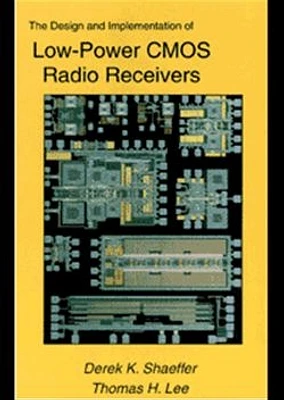Accueil
The Design and Implementation of Low-Power CMOS Radio Receivers

LIBRAIRIE CARCAJOU
The Design and Implementation of Low-Power CMOS Radio Receivers
De Librairie Carcajou
The GPS system comprises 24 satellites in low earth orbit that continuously broadcast their position and local time. Through satellite range measurements, a receiver can determine its absolute position and time to within about 100m anywhere on Earth, as long as four satellites are within view. The deployment of this satellite network was completed in 1994 and, as a result, consumer markets for GPS navigation capabilities are beginning to blossom. Examples include automotive or maritime navigation, intelligent hand-off algorithms in cellular telephony, and cellular emergency services, to name a few. Of particular interest in the context of this book are embedded GPS applications where a GPS receiver is just one component of a larger system. Widespread proliferation of embedded GPS capability will require receivers that are compact, cheap and low-power.






















